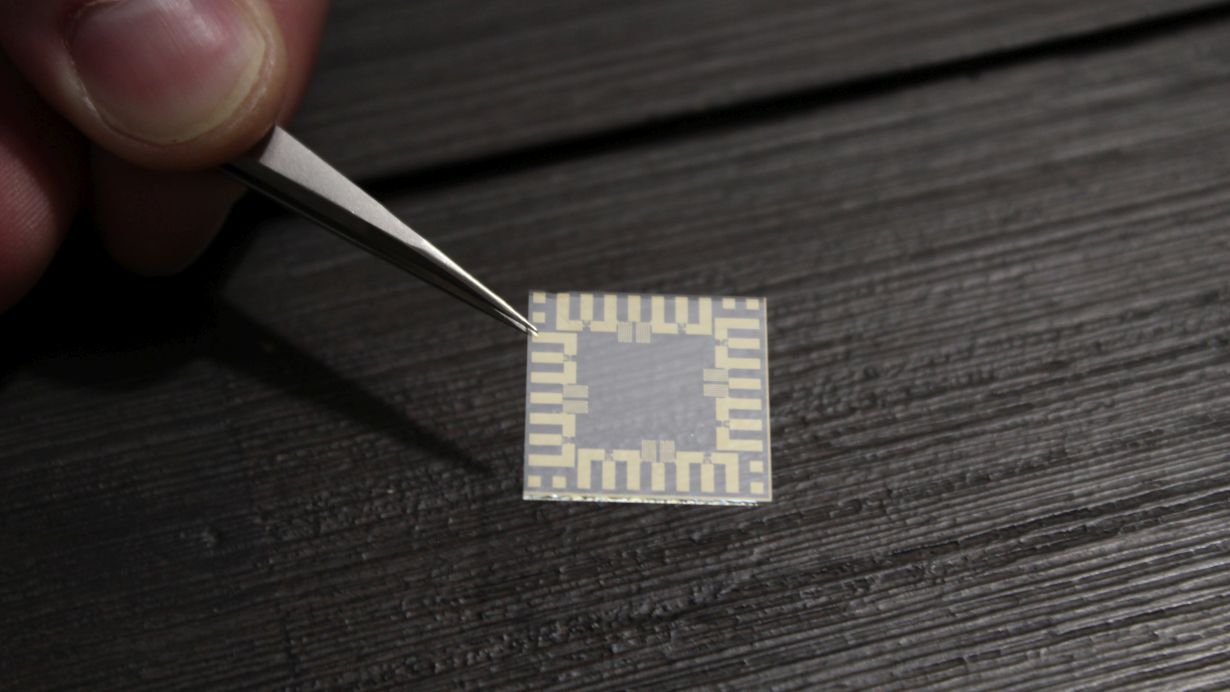 Joint project "sensIC" links materials science and cybersecurity - PUFs act as electronic identifiers
Joint project "sensIC" links materials science and cybersecurity - PUFs act as electronic identifiers
Electronic sensors can benefit many applications in industry, for example in automotive engineering. But they must be protected against attacks and falsification. The new joint project "sensIC" aims to integrate printed electronics and silicon components directly into products to secure sensors. Researchers at the Karlsruhe Institute of Technology (KIT) are developing a central component for this purpose: printed security circuits with special hardware-based functions, so-called Physical Unclonable Functions (PUFs). The Federal Ministry of Education and Research is funding sensIC with a total of 2.9 million euros. The industrial partners are investing a further 1.35 million euros in the project.
In electrically powered vehicles, they monitor the temperature of batteries to optimise their service life and performance; in plants in the chemical and pharmaceutical industries, they observe the operating status of passive components to detect faults immediately: Electronic sensors can reduce costs, improve reliability and enable new functions in many applications. Their use is particularly important when substances such as drinking water or food, oil or gas are transported through pipelines and a trustworthy supply and distribution chain must be guaranteed. Sensors can help to detect manipulations immediately. However, sensors that convert physical states into data streams are themselves exposed targets for attacks and falsification. How can sensors and sensor data be effectively protected? "Currently, information security in these applications is mainly based on software algorithms. But no software is perfect. Therefore, we must also ensure security via the hardware," explains Professor Jasmin Aghassi-Hagmann, head of the research group "Low Power Electronics with Advanced Materials" at the KIT Institute of Nanotechnology (INT). "Additive processes that create two- and three-dimensional components layer by layer are particularly well suited for this. With the help of such components, we can retrofit safety functions without having to hand over the design to the manufacturer."
The new joint project "Unique identifiability for trustworthy hybrid sensor electronics using additive manufacturing - senslC" combines additively manufactured, i.e. printed electronics with silicon components and integrates them securely directly into products. As a concrete application of the project, hybrid integrated sensor circuits are built into hoses as required for various automotive and industrial applications. The project, coordinated by Benecke-Kaliko, a subsidiary of Continental, combines materials science and cybersecurity. At INT, researchers led by Professor Jasmin Aghassi-Hagmann are developing and producing a central component for this: printed security circuits with so-called Physical Unclonable Functions (PUFs).
Digital fingerprint enables identification and encryption
PUFs are hardware-based functions that arise due to minute fluctuations in the production process. For example, variations occur in printed electronics due to the coarse print resolution and the materials and inks used. A PUF evaluates these variations and uses them to generate an individual signal that acts as a digital fingerprint, so to speak, and enables unique identification of the component or secure encryption of information. In a recent publication in the journal Nature Communications, scientists from KIT and Offenburg University of Applied Sciences presented a hybrid PUF based on metal oxide thin-film devices that combines printed electronics and silicon technology. This PUF is suitable for securing devices and protecting data in the Internet of Things, in which people communicate with machines as well as machines with each other.
For applications in industry and the automotive sector, the sensIC project supplements the PUFs as electronic identification features with optical identification features developed by the company Polysecure: embedded fluorescent particles form random and therefore non-copyable patterns due to the process. These particle patterns are registered during the production process and allow the unique identification of the component as well as an additional tamper protection against hardware manipulation.
The German Federal Ministry of Education and Research (BMBF) is funding the sensIC project, which will start on 1 May 2021 and run for three years, in the framework programme "Microelectronics from Germany - Innovation Drivers of Digitalisation" with 2.9 million euros out of a total project volume of 4.25 million euros. Benecke-Kaliko, a subsidiary of Continental, is acting as coordinator. In addition to the KIT Institute of Nanotechnology, other partners in the project are Cyient, Polysecure, the Leibniz Institute for New Materials, Offenburg University of Applied Sciences, ContiTech MGW and, as an associated partner, Elmos Semiconductor.
www.kit.edu


















































































